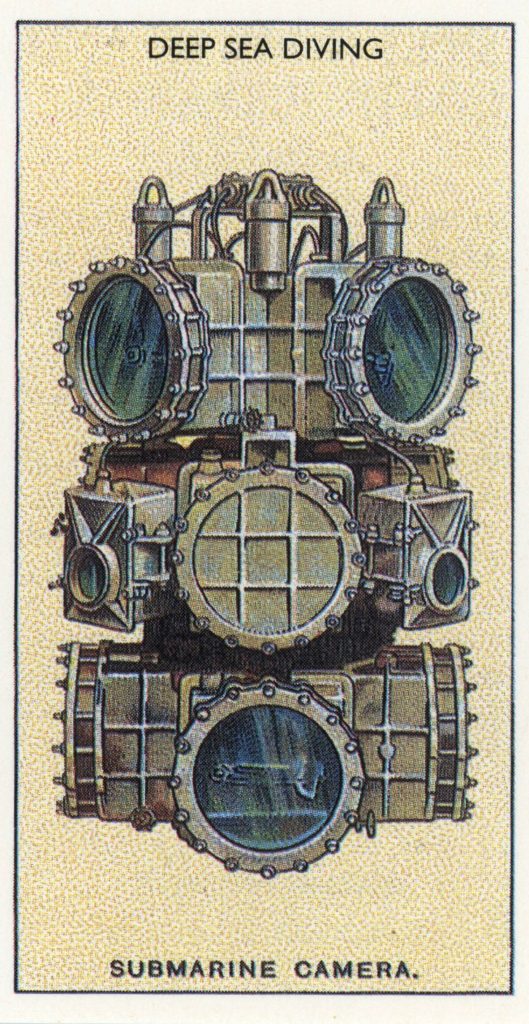We asked members to provide short ‘bite sized’ pieces about their favourite cameras for a special series of features in Tailboard – many featured unusual, rare and obscure cameras – all of them are interesting!
Giroux Daguerreotype Camera
While I am a collector of early wood and brass cameras along with images, including many autochromes, I do have a special item made by the late Jerry Smith. Jerry made a limited number of 1:3 scale models of the Alphonse Giroux Daguerrotype camera. They were made, as were the originals, from a variety of different woods.
Smith also made one or two plate holders, which he felt were very difficult to produce and so didn’t make any others. I did see what was said to be an original Giroux from the Jack Naylor collection and this scale model is very close in design.
Bill Rosenthal
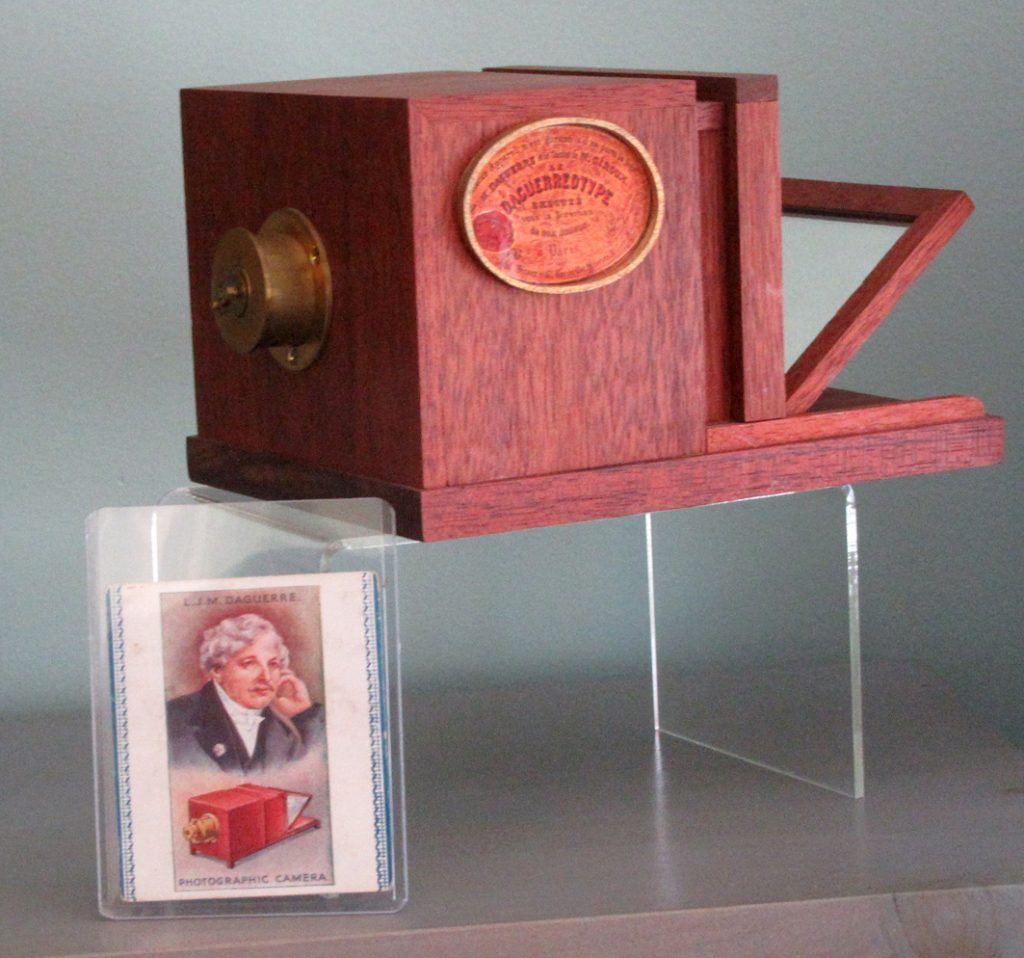
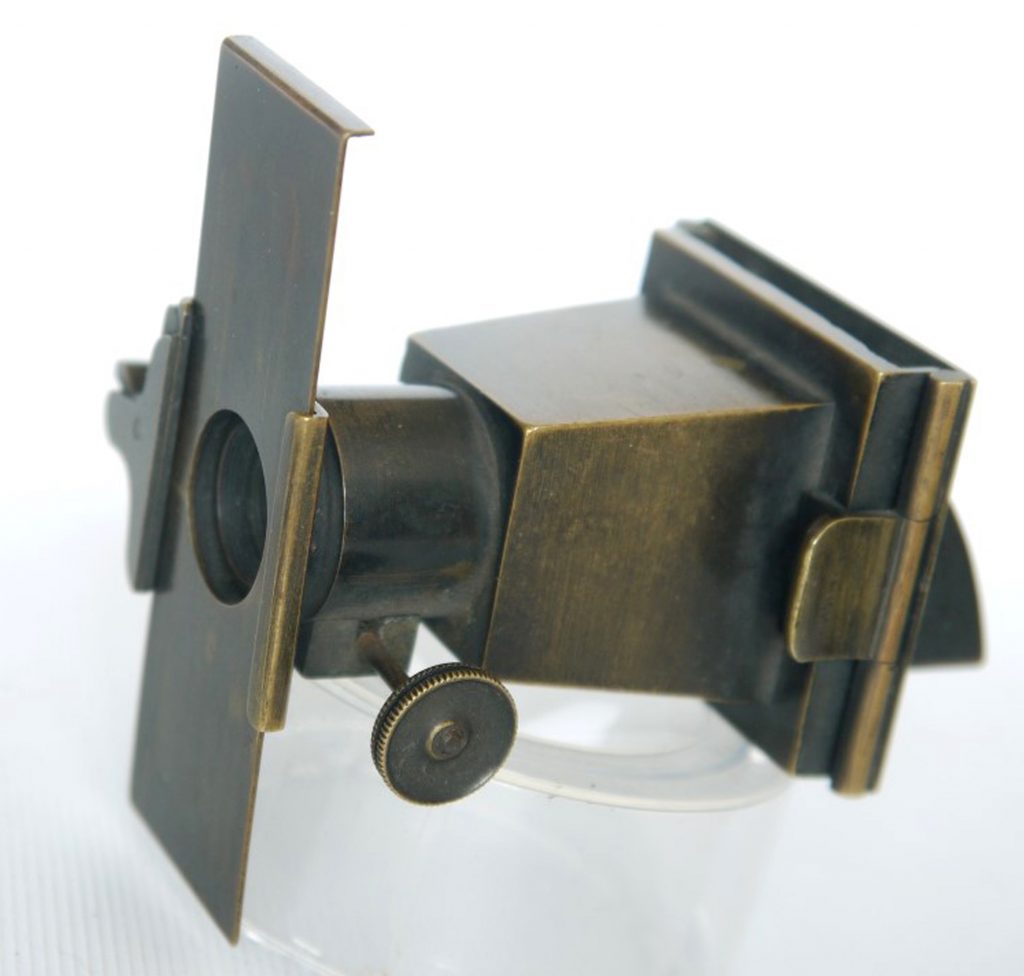
Marion metal miniature
When I worked for a local newspaper back in the late 70s I could put a free wanted advert for cameras every week. This person phoned and was clearing a flat and had some cameras. Turned out they were fairly basic folders but also there was this. I didn’t know what it was, I thought it was some kind of viewer as the front guillotine shutter blade was a bit bent. I gave £28 for them and put it aside.
About a year or so later I took it to a club fair in Swanley and showed it to the late fount of all knowledge – Bob White. He immediately knew what it was and said it was worth a few hundred pounds. Only problem my daughter has claimed it when I go.
Wally M
Langham-Thompson camera
This camera was produced in 1958 by electronic engineers J Langham Thompson who also designed a high speed camera capable of 125,000 images per second. It was built to record oscilloscope traces and features:
Solid metal construction weighs 3.5lb (1.6kg)
Wray 2” f/1.0 lens in focussing mount
24 x 24mm format
Manual shutter release plus electrical connections
Pre-set single frame film wind with frame counter
The lens was developed from the Wrayflex Unilite by Charles Wynne with two extra elements and optimised for the blue-green oscilloscope spectrum using a ratio of 4:1, it is of little use for general photography. My example bought from a militaria dealer bears the government “broad arrow” and was listed as a photo reconnaissance camera!
Geoff Watson
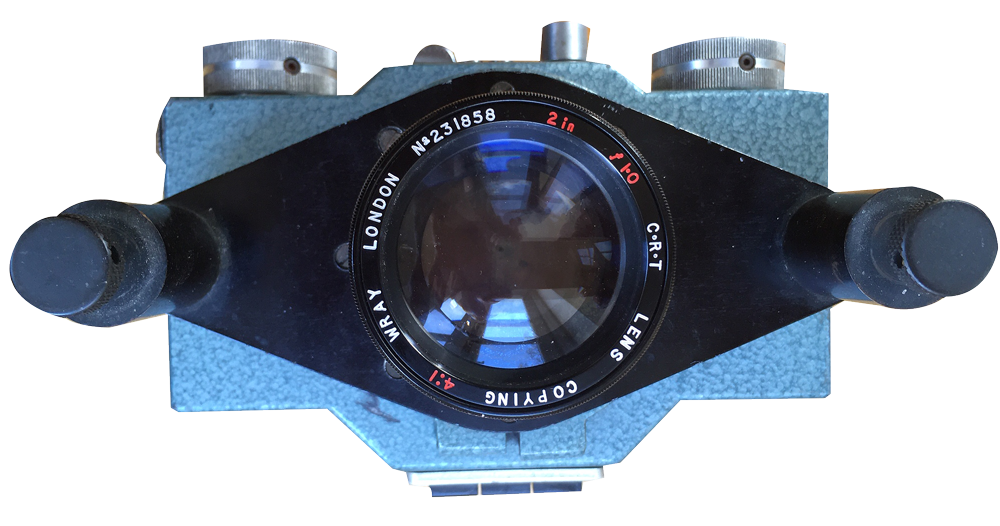
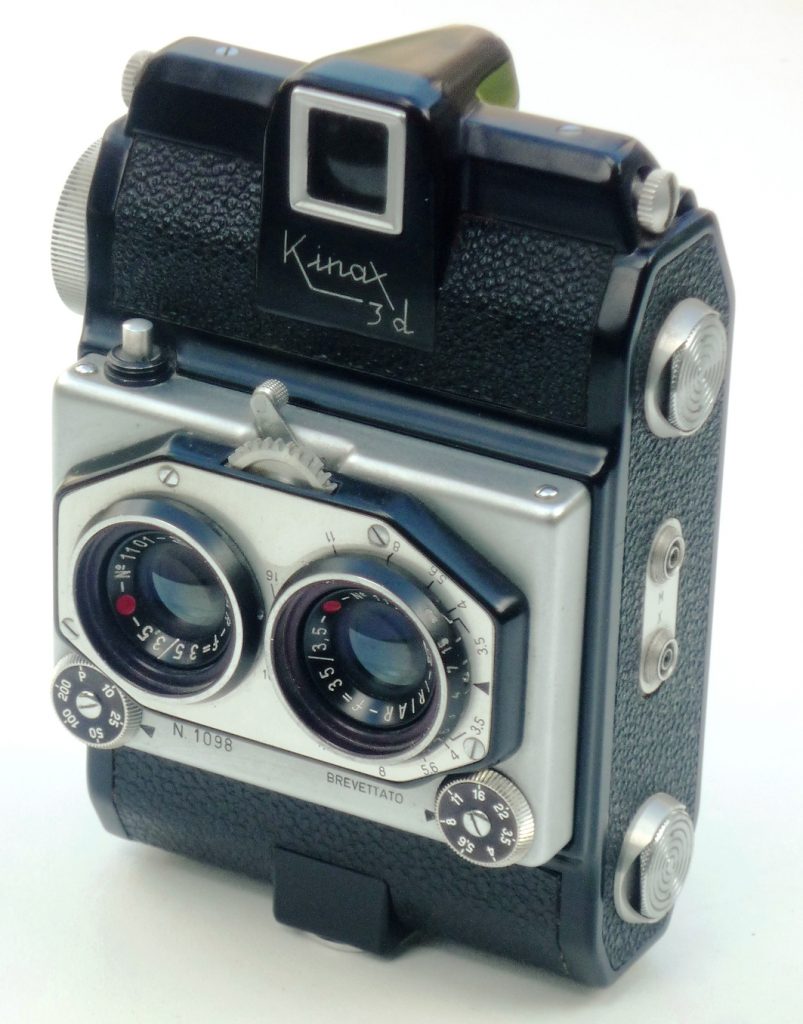
Kinax 3d
The Kinax 3d is a compact stereo camera for 24 pairs of 23 x 25mm views on 120 film, fitted with two IRIAR f/3.5 35mm lenses. What, Italian lenses and BREVETTATO engraved while bearing the name of a French camera maker? Well, this was an attempt to sell the 1956 French ISO DUPLEX 120, rebadged Kinax 3d in Milano. The project failed soon, as Kinax actually intended to mount the camera from imported parts with French lenses and shutter, which did not occur. 6 Kinax 3d can be identified, taken out from the first batch of 100 Duplex Super 120, of which the total production slightly exceeds 10.000 units.
The Kinax 3d illustrated was acquired at a French camera auction, at a reserve price under the prices usually realized for Duplex Super 120. It was too rare to be well known.
Jean-Pierre Vergine
Canon 7
Back in 1961, when I was a teenager, there appeared in Photographic magazines, a camera called the Canon 7, whose lens had an amazing f/0.95 maximum aperture.
They called it the Dream Lens. I remember the advertisements of those days claiming that it was four times more sensitive than the human eye. I wasn’t sure how they measured that, all I knew was that I wanted one. It turned out to be around 50 years before I fulfilled the dream. What a magnificent looking camera.
John Wade
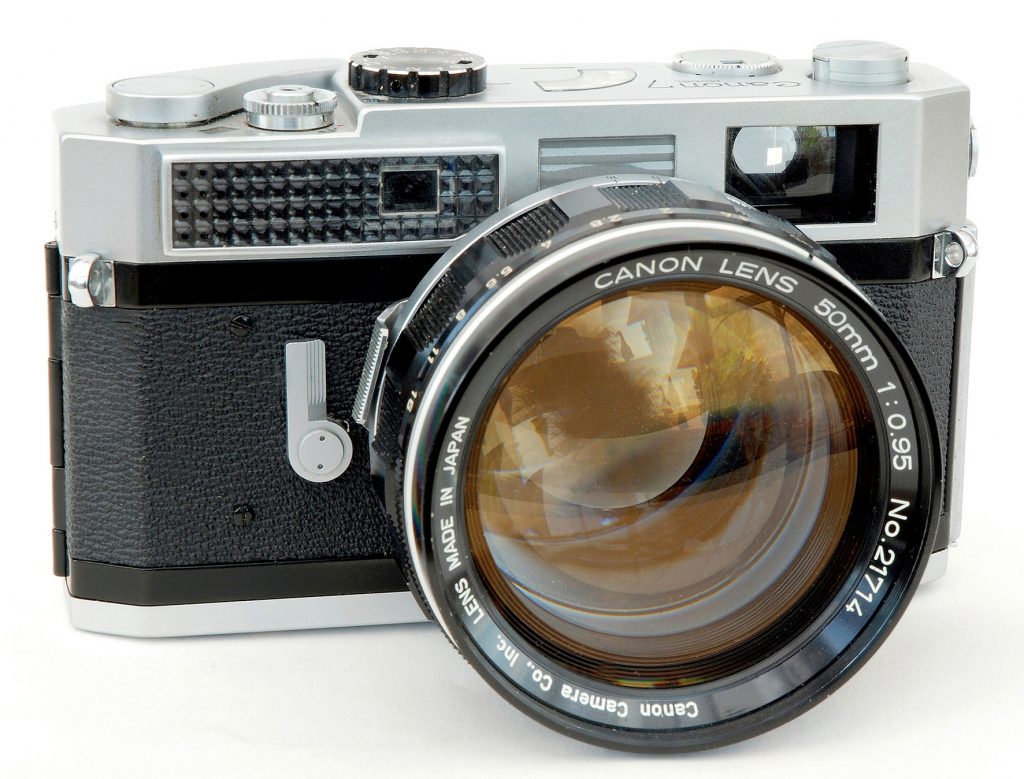
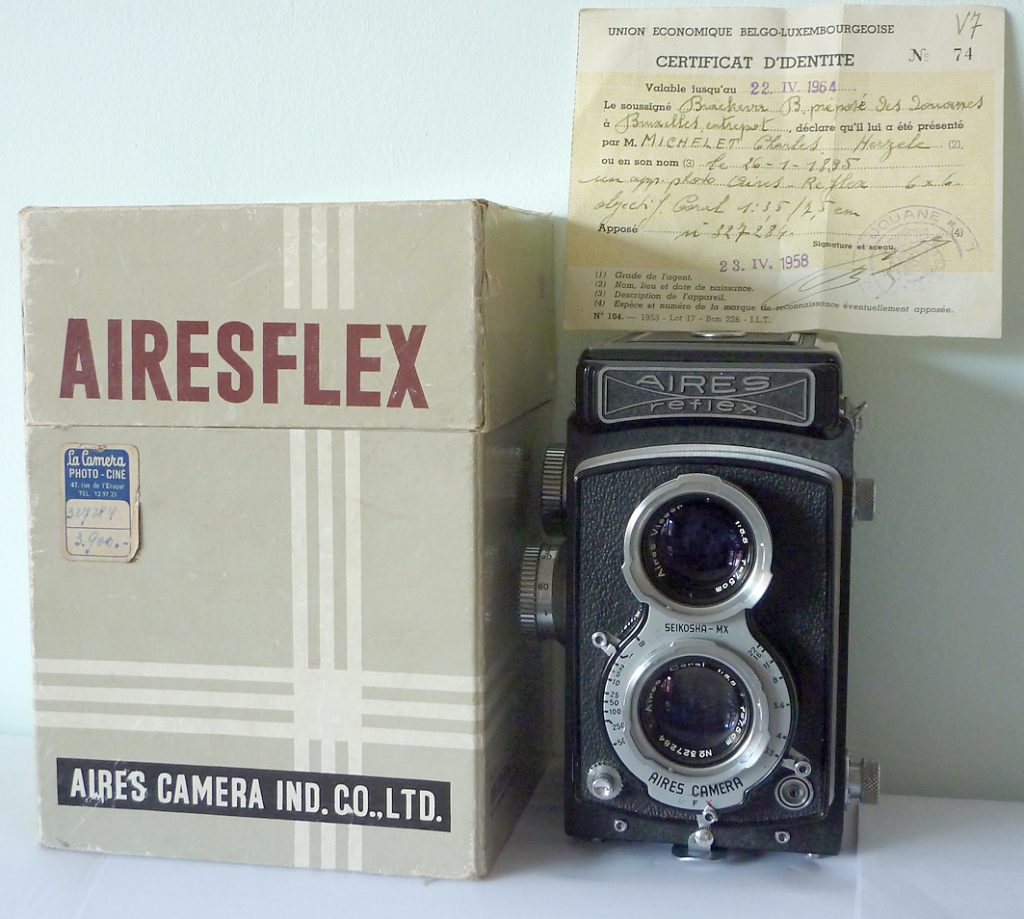
Airesflex
Before bankruptcy in 1960, Aires produced some interesting, now scarce, cameras. Consequently, I was pleased to buy this mint, boxed and cased TLR which the specialist seller was having trouble identifying. In the box was a customs document dated April 1958 which shows the camera was imported and sold by a Brussels dealer.
The camera is a well-built Rolleicord (Triotar) clone with a magnificent hide case with its clever securing locks and the lens cap incorporating a retaining screw lock. The instruction manual claims that the lens was actually made by Aires.
Peter Hill-Jones
This gorgeous camera combines 3 of my primary collecting interests: wood and brass construction, diminutive size (wood body 3 ¼ x 3 ¾ x 3 ¾”) and Polaroid cameras. Polaroid, you may ask? The Dubroni, with its in-camera image processing, was an historically significant precursor to Polaroid’s extraordinary commercial success with instant photography. It is my first and only wet plate camera, dating from the 1860s. I am delighted that it includes its original wooden case.
Now I would like to find vintage glass bottles for the developing chemicals. Based upon dimensions of the compartments in the original case, I believe these each measure 3.7 x 3.7 x 9.5cm. I would be grateful if anyone knows where I can find these (there should be 7)!
Replies please: E: Steve Rudd
Thanks,
Steve Rudd
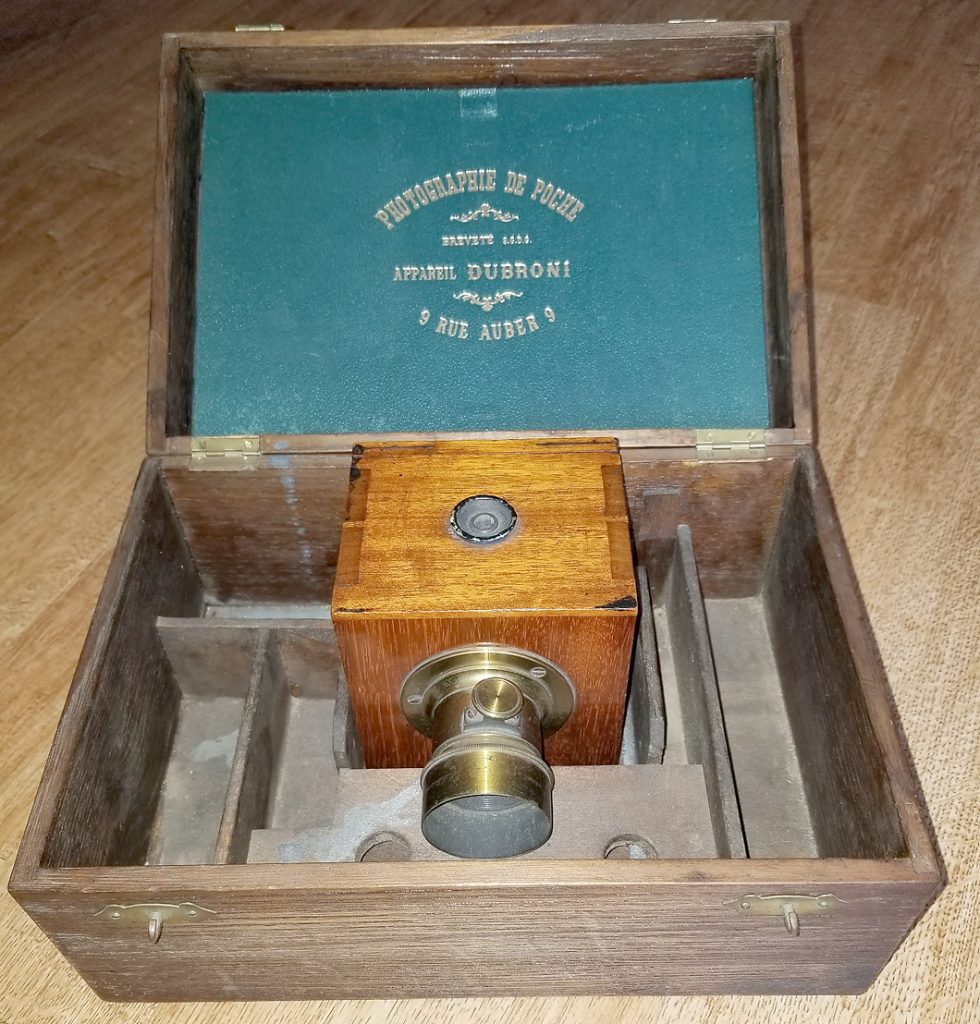
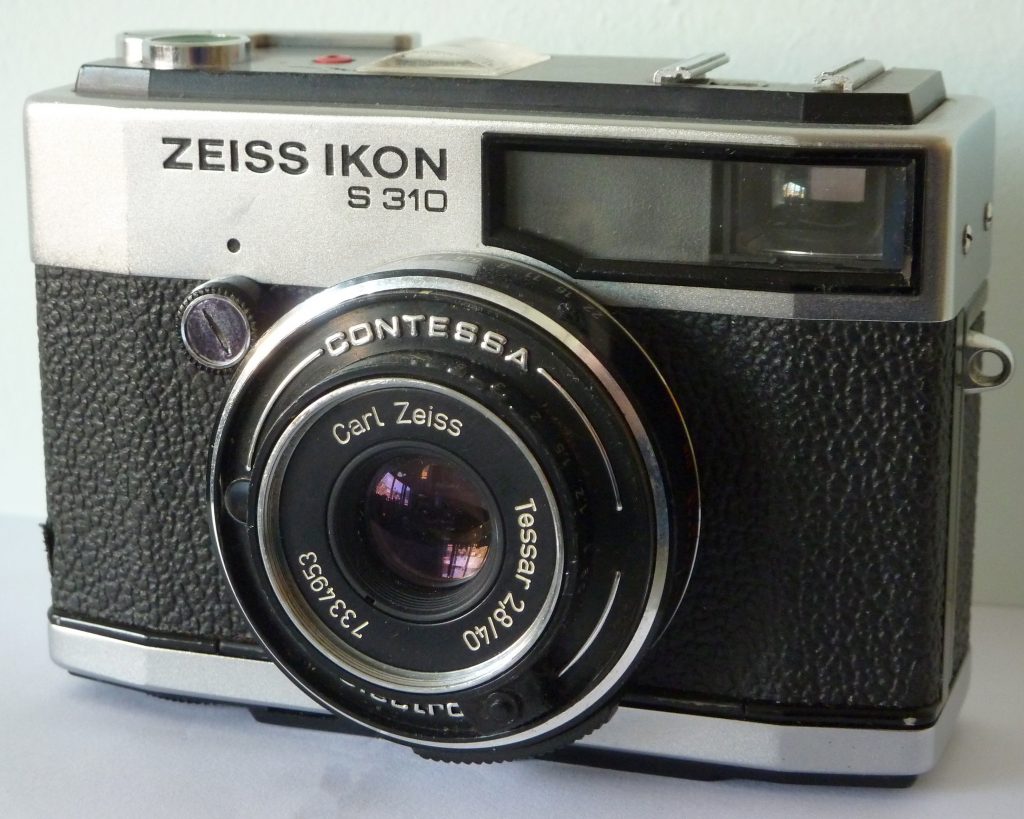
Contessa S310
Following the acquisition of a beautiful Contax IIa in excellent condition some years ago, I saw on a Classic Camera site this Contessa S310 in fine condition. Having used a Rollei 35 over the years, I appreciate the extent to which this 1970 Zeiss camera improves on the Rollei. Its controls are logically placed, the viewfinder is bright line with shutter speed, aperture and focus point all identified.
All it lacks is a rangefinder, a deficiency rectified in the S312 which, even rarer, was marketed only months before Zeiss Ikon closed down in 1972.
Darrell Hill-Jones
Curt Bentzin Moment-Klapp-Camera
This uncommon camera has been often erroneously assigned to A Stegemann. Made from 1896 to 1899, it was developed to meet the growing demand for hand cameras, as also seen in other notable period camera makers such as Shew, Goerz, Lechner, Goldmann or Stegemann.
The camera is remarkably solid, although the articulated wooden struts and the fine leather bellows seem fragile at first sight. The patented front standard has 4 cross slots to allow perspective correction. The partially exposed focal plane shutter mechanism is a nice piece of engineering.
José Paula
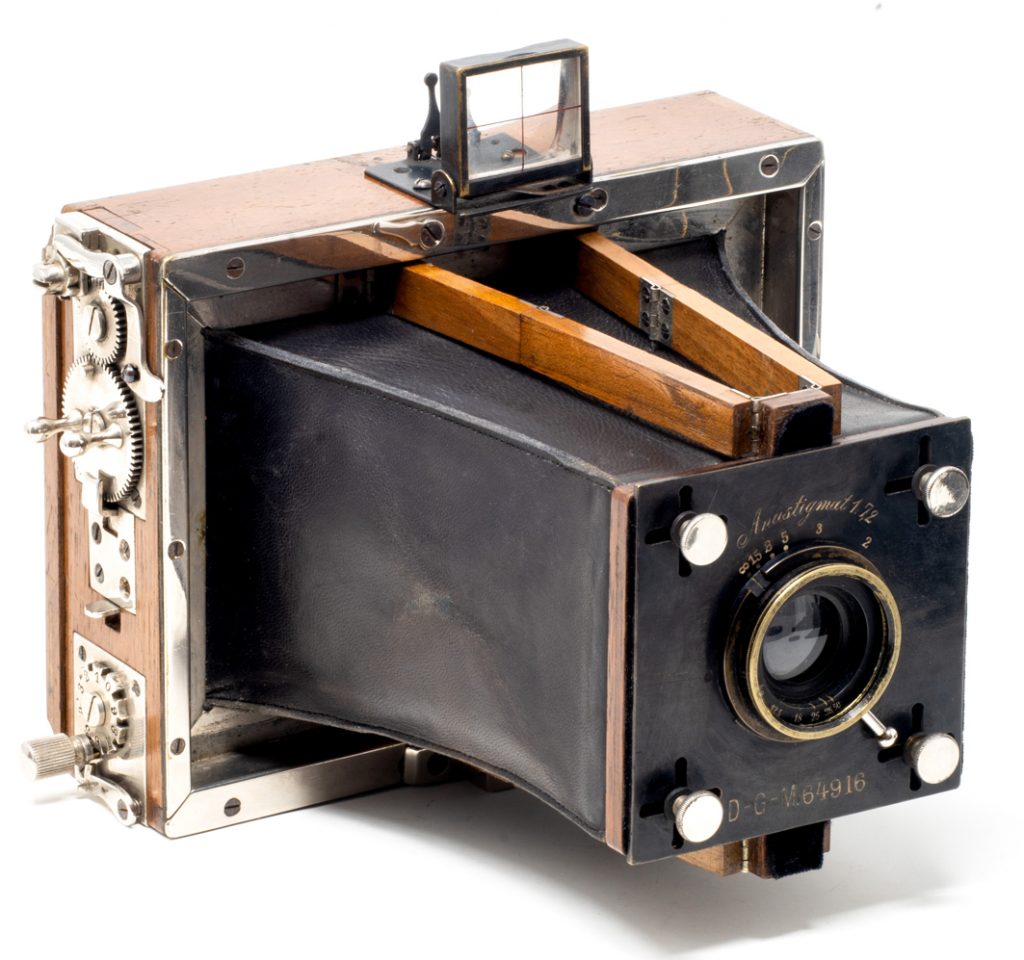
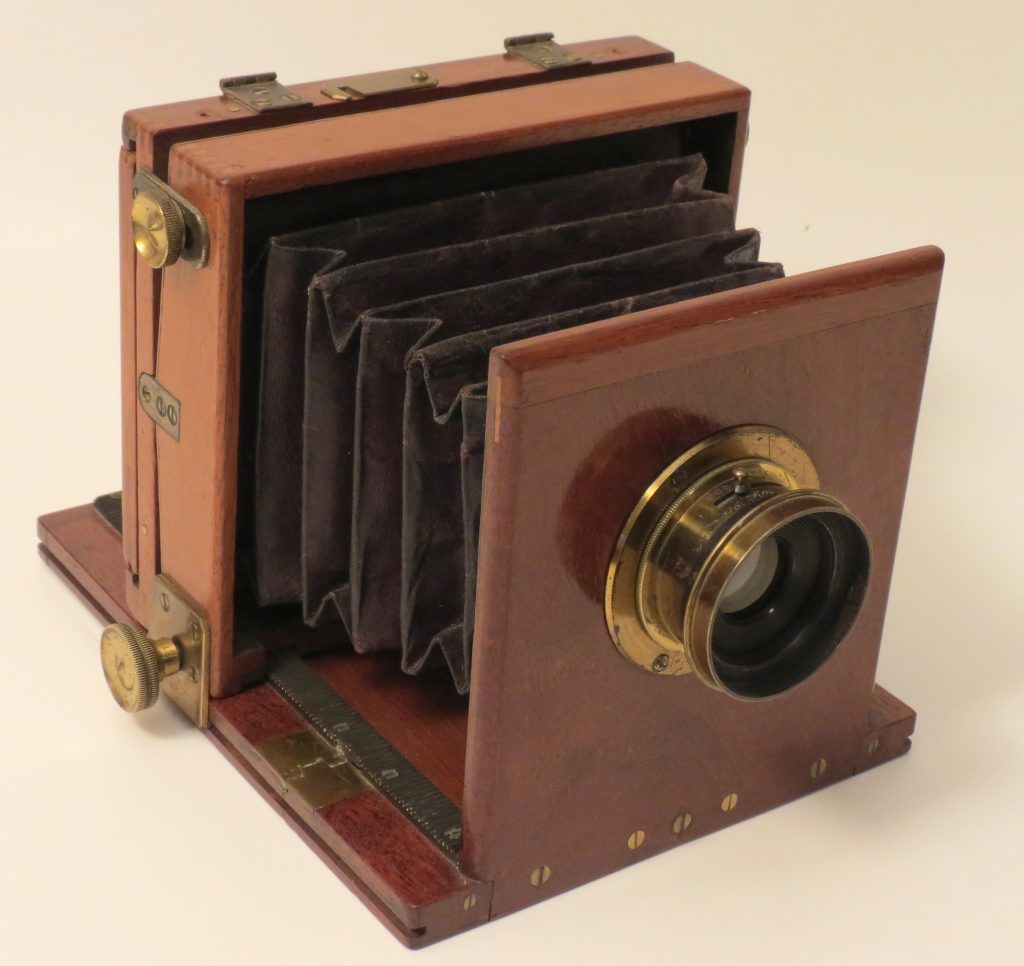
Un-named quarter-plate camera
This beautiful quarter-plate, wood and brass tailboard camera, acquired in October 1989, remains a favo(u)rite and unidentified thirty years later. The lens is Ross London, 5 inch, Goertz Patent Double Anastigmat, f/7.7. The only camera markings: “XXVIIII” twice where the plate holder goes, and “XXVIII” once on the ground glass frame.
I had assumed it would not be difficult to identify. One expert thought it was clearly English, perhaps Lancaster; another thought possibly Lancaster or Billcliff. Ideas, please.
Ralph London (London@imagina.com)
Gasc & Charconnet Btes gdg a Paris
Here is a lens which I was given many years ago.
I believe it to be a globe type. The lens barrel carries the legend “Gasc & Charconnet Btes gdg a Paris“. There is also the number 31460 which at first I took to be a serial number but, on reflection, is it likely that more than 31 thousand of these were made?
I have decided it is a date ie March 14 1860. Am I right ?
Alex McLachlan
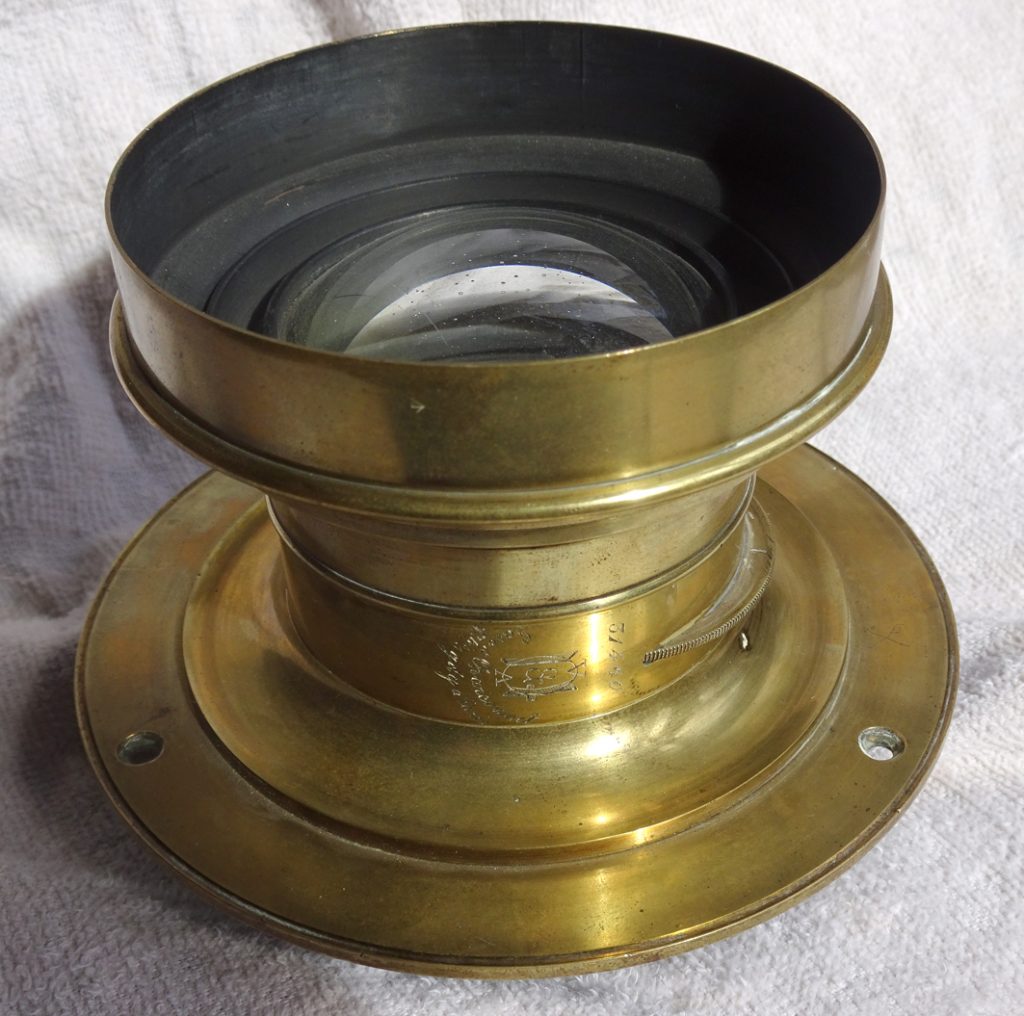
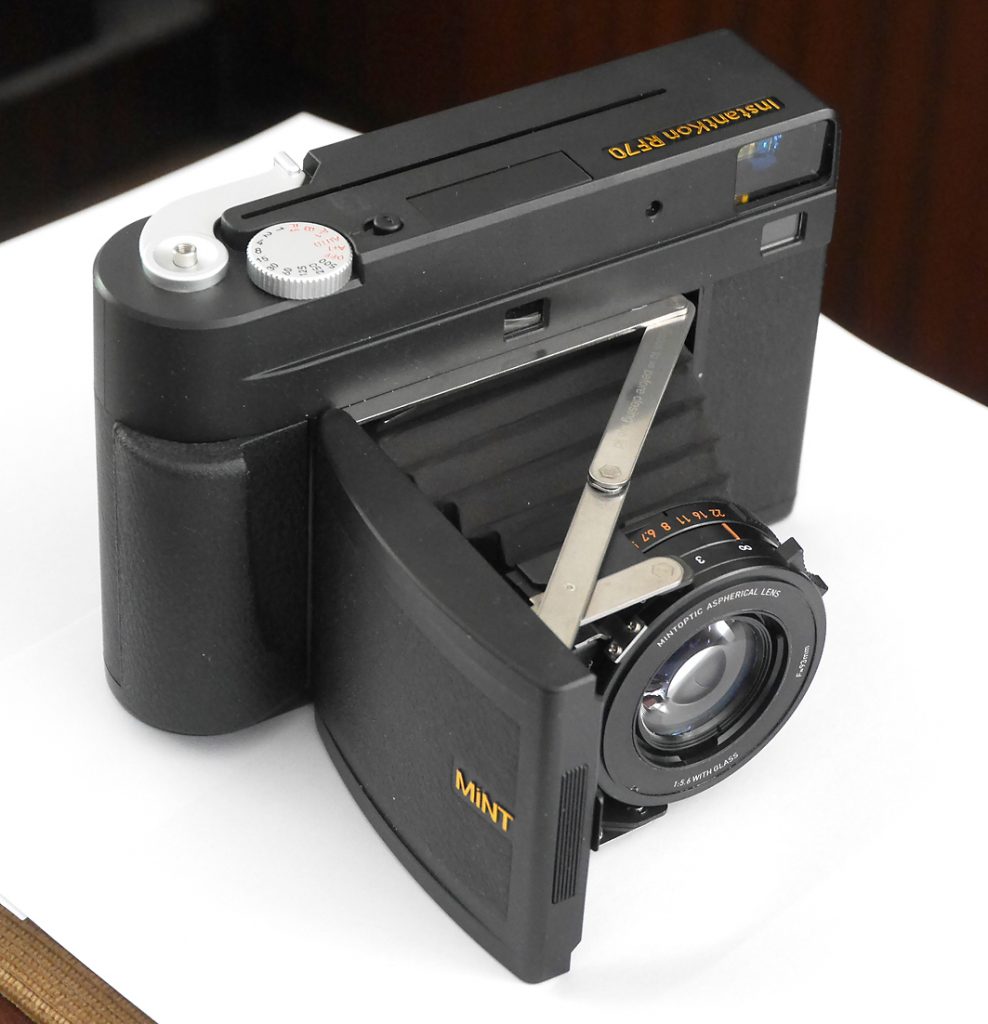
MINT RF70
In 2019 I acquired this Mint RF70 folding camera made by a small specialist firm in Hong Kong. It uses Instax Wide film (colour or monochrome). This is a bit like having a large digital sensor, giving quick results that can easily be scanned.
The camera is beautifully made and equipped with an accurate rangefinder that is viewed under the optical viewfinder. It has full manual control of aperture and shutter speed, and also incorporates a light meter for aperture priority automatic exposure. It’s great fun and turns heads whenever I use it!
Adrian Johnson
Periscope Leica (?)
If you know your Leicas, a quick glance at the front and top of this camera will show you that it is indeed a Leica 1f (the clues are that it has no viewfinder, rangefinder or slow speeds).
Further investigation of the serial number confirms that this is a Leica 1f and manufactured in 1951 and part of a batch of 2200.
So far pretty standard and straightforward.
Now turn the camera round to look at the back and things get a little less ‘straightforward’ – there is a hole in the back, threaded for a felt-lined screw-in cover.
The 1f was made for special applications and you could speculate that the back hole of this one could be used to check focus with a special viewing screen, perhaps before loading film and taking pictures.
Could this be a “Periscope Leica” for naval purposes, or do you know of any other uses made of a camera with this specific modification?
A very similar camera, with a so called ‘periscope’ mount, was auctioned at Christies in 2002 and sold for £5,875.
Any information you may have, practical or otherwise, about the use of this camera would be gratefully received by the owner, via the Tailboard Editor.
Replies please: E: tailboard@pccgb.com
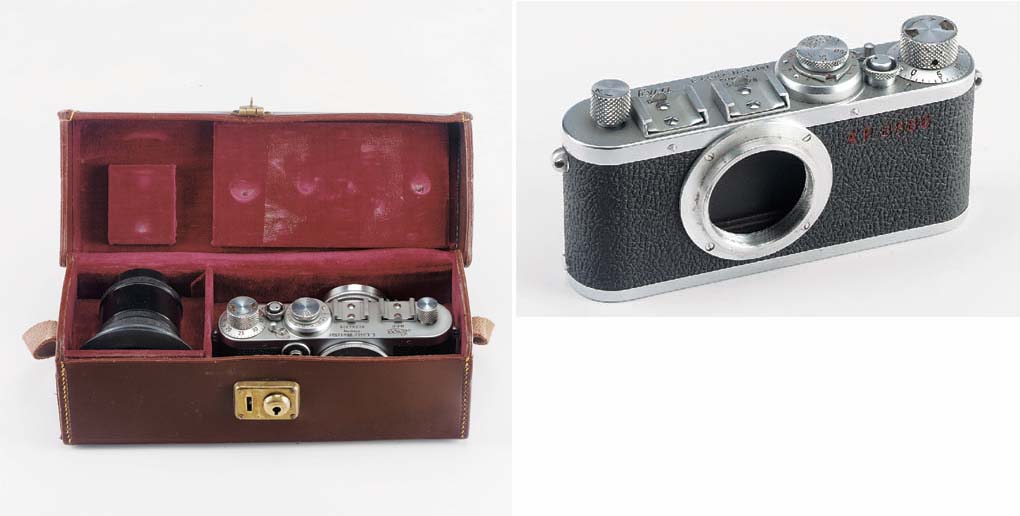
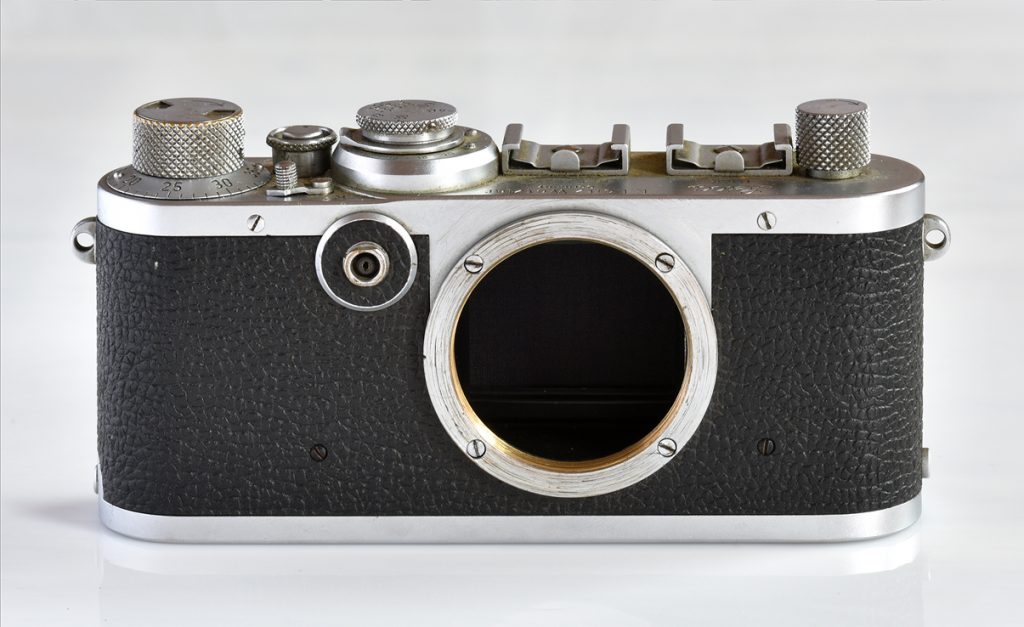
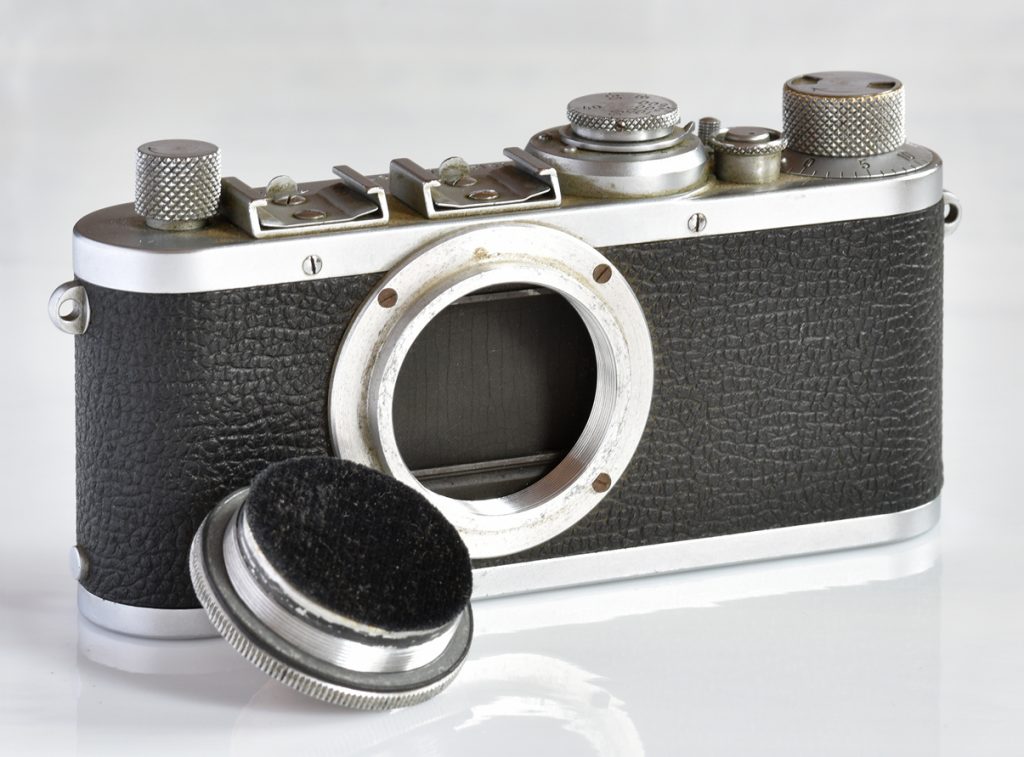
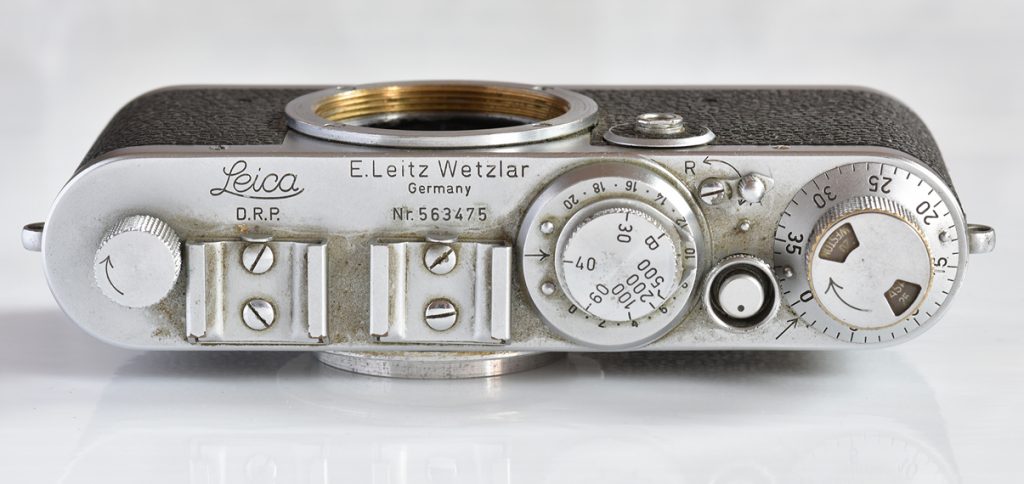
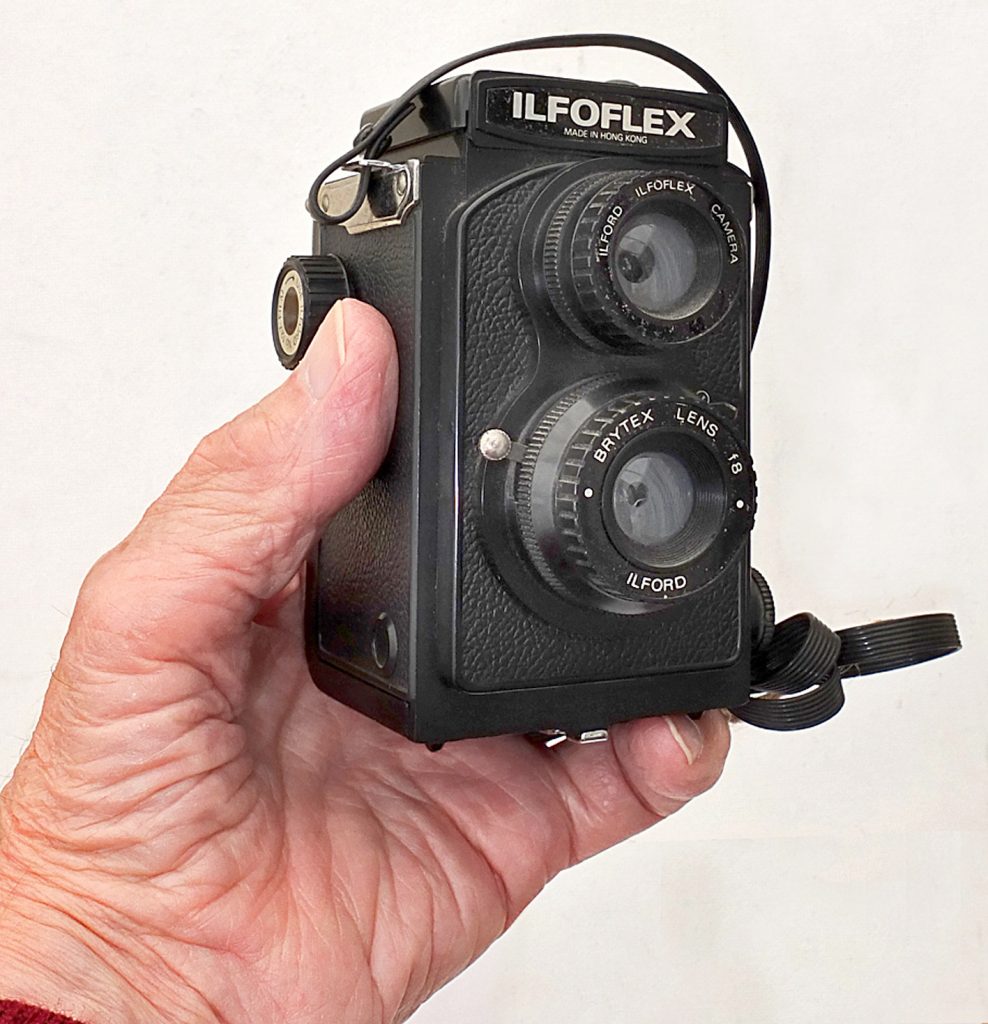
Ilford Ilfoflex
I knew nothing about it other than, as written under its nameplate, it was made in Hong Kong. I did a little research and found it was indeed an Ilford product made c1961, mainly as a promotional camera exchanged for collecting tokens from a range of products.
It is fitted with an f8 Brytex lens – probably plastic – and a shutter giving instantaneous and bulb settings. The film wind knob suggests you use Ilford 127 film, which would produce an image 4x4cm. Although plastic construction it is surprisingly well made. For the curious owner, the instructions can be seen here. Not a commonly found camera but, at the time of writing in November 2020, an Ilfoflex is available on eBay for £89.99!!
Clifford Brown
[NB from the Tailboard Editor: This camera intrigued me and my fascination for British cameras led to more research. It seems likely that the maker was either Haking Wong or the Great Wall Plastics Factory, Kowloon in Kowloon who are accepted as the manufacturer of the original Diana cameras.
As some of you know I collect vintage postcards with cameras on. I bought the card shown here recently only to find, when it arrived, that it was actually a ‘collectors card’ and not a full size postcard. The camera is nevertheless very interesting both as an object and because of the job it was built to do.
From the back of the card: “At the end of World War One in 1918 the Allied Command was faced with the task of clearing not only minefields but booby-traps from coal and other mineral mines in France and Belgium. These mines had been flooded by the Germans during their retreat.”
When the Allies tried to clear these mines there were a number of serious accidents. The French government commissioned Siebe Gorman and Co Ltd to make the camera shown. This consisted of a housing 4 feet 9 inches high by three feet 4 inches in diameter. It contained powerful lights and cameras facing different ways. It was lowered into the mines to detect the booby traps.”
Has anyone got one of these in their display cabinet (!) or knows where one can be seen?
Replies please: E: tailboard@pccgb.com
David Gardner
